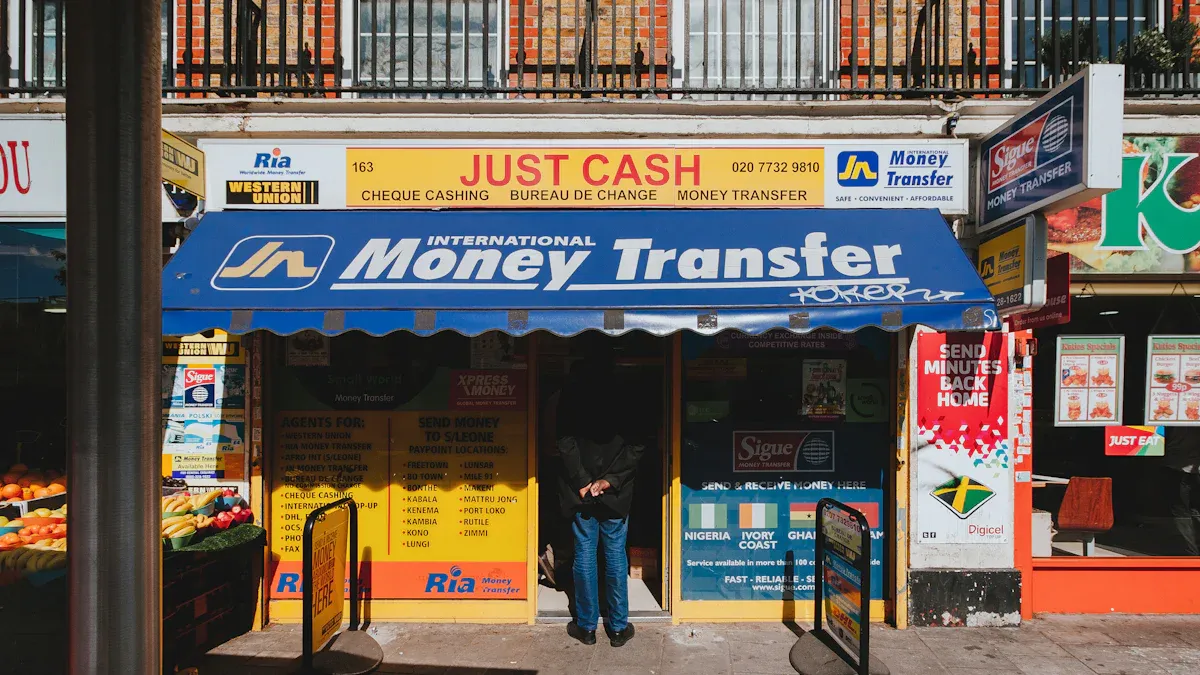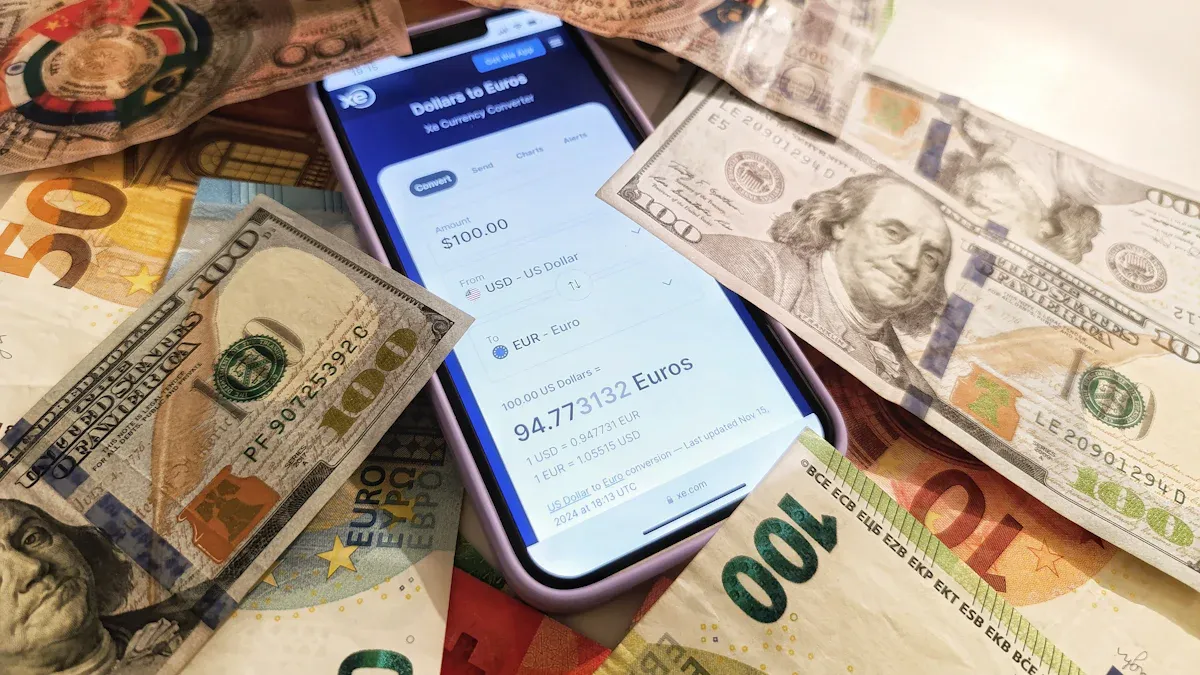- EasyCard
- Trade
- Help
- Announcement
- Academy
- SWIFT Code
- Iban Number
- Referral
- Customer Service
- Blog
- Creator
What does the Malaysian currency RM represent? Why is it so important for remittances?

Image Source: unsplash
RM is the official symbol for Malaysia’s legal currency, “Ringgit Malaysia.” Its currency code is MYR, and it is commonly referred to as “Malaysian Ringgit.” Allremittance transactions in and out of Malaysia are based on the Malaysian Ringgit RM.
Did you know that even when remitting the same $1,000, the final RM amount received by the recipient can vary significantly? A slight change in the exchange rate can substantially impact the final amount credited.
Key Takeaways
- RM is the currency symbol for Malaysia, and MYR is its international code; both refer to the Malaysian Ringgit.
- Exchange rate fluctuations affect remittance amounts; choosing a favorable exchange rate timing can increase the money received by the recipient.
- The total cost of remittance includes transfer fees and hidden exchange rate markups; comparing the total fees across platforms is important.
- Bank Negara Malaysia regulates remittances, and remitters need to comply with regulations and limits.
- Understanding Malaysia’s cost of living can help remitters send amounts sufficient to meet the recipient’s needs.
How Does Malaysian Ringgit RM Affect Remittances?

Image Source: pexels
Remittance is not just transferring money from point A to point B. From exchange rate fluctuations to regulatory policies, the Malaysian Ringgit RM plays a key role in every step of the remittance process. Understanding these factors can help remitters maximize the value of funds.
Exchange Rate Fluctuations and Received Amounts
Foreign exchange rates are constantly changing. This means that even when sending the same amount in USD, the Malaysian Ringgit RM amount received by the recipient may differ every day.
For example: Suppose someone plans to remit $1,000 to Malaysia.
- When the exchange rate is 1 USD = 4.60 Malaysian Ringgit, the recipient will receive: 1,000 x 4.60 = 4,600 RM.
- If they wait until next week when the exchange rate becomes 1 USD = 4.70 Malaysian Ringgit, the recipient will receive: 1,000 x 4.70 = 4,700 RM.
Just due to the exchange rate change, the recipient receives an extra 100 RM.
Many factors influence exchange rates, mainly including:
- Economic Performance: Malaysia’s economic growth, inflation rate, and interest rate decisions.
- Political Stability: A stable political environment can boost investor confidence in the currency.
- Global Market Dynamics: International oil prices (Malaysia is an oil exporter) and the economic conditions of major trading partners (such as China and the US) all affect the value of RM.
Remittance Fees and Actual Costs
The total cost of remittance consists of two parts: explicit transfer fees and hidden exchange rate markups.
-
Transfer Fees Banks and remittance service providers charge fixed fees or percentage-based fees. These fees vary greatly depending on the service, remittance method, and amount. For example, wire transfers, online transfers, or cash pickups have different fees.
The table below shows the fee structures of some Malaysian bank services, illustrating their complexity:
Bank/Service Remittance Method Fee (RM) CIMB SpeedSend (RM250 - RM200,000) 10.00 / per transaction Hong Leong Bank Online Wire Transfer (non-SGD currency) 20.00 Bank of China Outward Wire Transfer (foreign currency payment < RM5,000) Telex fee RM30.00 + Service fee RM2.00 Bank of China Outward Wire Transfer (foreign currency payment >= RM5,000) Telex fee RM30.00 -
Exchange Rate Markup This is a hidden cost. The exchange rate provided by many service providers is not the real “mid-market rate” but includes a profit margin added on top. This markup can be higher than the explicit transfer fee. For example,for a RM1,000 transfer, a 5% exchange rate markup means an extra RM50 cost.Some online platforms (like Wise) use the mid-market rate and only charge transparent service fees; while others (like Remitly) may add a 0.5% to 3.0% markup to the exchange rate.
Regulatory Policies and Remittance Limits
All financial transactions in Malaysia are regulated by Bank Negara Malaysia. The institution has established Foreign Exchange Policy (FEP) to ensure the stability of the financial system.
Note: Both remitters and recipients must comply with these regulations. Non-compliance may result in transaction delays, rejections, or even legal consequences.
These regulations set limits for remittances based on different identities and purposes:
- Malaysian Residents Sending Out:
- Education Purposes:Direct payment of tuition or living expenses to overseas educational institutions usually has no specific limit, but requires supporting documents like admission letters.
- Investing in Overseas Property: For self-occupied property during education, there is usually no limit after providing student visa and purchase agreement documents.
- Non-Residents Sending Out from Malaysia:
- Non-residents’ Malaysian Ringgit accounts (external accounts) typically have a daily cumulative transaction limit of 10,000 Ringgit.
- If the transaction amount exceeds 10,000 Ringgit, supporting documents and transaction purpose must be provided to the bank.
- Specific exempt groups (such as “Malaysia My Second Home” participants or expatriates working in Malaysia) are not subject to this limit.
Currency Purchasing Power and Cost of Living
The ultimate significance of remittance lies in what it can purchase locally. Inflation gradually erodes the purchasing power of currency. According to data,Malaysia’s cumulative inflation rate over the past five years up to the end of 2024 is approximately 10.4%. This means that 1,000 RM five years ago has a purchasing power equivalent to only about 896 RM today.
Therefore, understanding Malaysia’s local cost of living is crucial for determining whether the remittance amount is sufficient. Here are some cost of living references for major cities (like Kuala Lumpur and Penang) (estimated in USD; exchange rates affect actual RM amounts):
- Housing:
- A one-bedroom apartment in Kuala Lumpur city center costs about $600 - $850 per month.
- A one-bedroom apartment in Penang costs about $300 - $500 per month.
- Groceries:
- Monthly food expenses for one person cooking at home are about $150 - $250.
- 1 liter of milk costs about $1.20 - $1.50, and 1 kg of chicken costs about $3.50 - $4.20.
- Transportation:
- Using public transportation costs about $25 - $40 per month.
- Using ride-hailing services like Grab for short trips costs about $1.50 - $3.00.
Understanding these costs helps remitters send amounts more aligned with actual needs, ensuring the recipient’s life in Malaysia is fully supported.
How to Optimize RM Remittances?

Image Source: pexels
After understanding the factors affecting remittances, remitters can adopt strategies to optimize each transaction and maximize fund value. This not only saves costs but also ensures the recipient receives more money.
Choose the Best Remittance Timing
Exchange rate fluctuations provide opportunities for remitters to save costs. Transacting when the exchange rate is favorable can significantly increase the amount received by the recipient. To seize the best timing, remitters need to monitor economic events that may cause short-term fluctuations in the Malaysian Ringgit RM exchange rate.
Key Economic Indicators Include:
- GDP Growth Reports: Reflect the country’s economic health.
- Inflation Data: Influence central bank interest rate decisions.
- Trade Balance: Show the balance of imports and exports.
- Monetary Policy Statements: Any policy uncertainty from the central bank candrive sharp exchange rate fluctuations.
Some modern remittance platforms offer exchange rate analysis tools to help users judge trends. These tools may analyze influencing factors,predict trends for the next 1-2 weeks, and provide potential support or resistance levels, helping users make more informed decisions based on data.
Compare Platform Exchange Rate Differences
Different remittance service providers offer vastly different exchange rates and fee structures. Remitters should not focus only on advertised lowfees but should comprehensively compare total costs.
Traditional banks and digital remittance services differ in multiple aspects:
- Traditional Banks: Transfers usually take 3 to 5 business days, and their provided exchange rates typically include high profit markups.
- Digital Remittance Services: Usually complete transfers in minutes and are available 24/7. Some platforms (like Wise) use the real “mid-market rate,” i.e., the rate you see on Google[wise.com/us/compare/remitly-usd-to-myr], and only charge a transparent service fee.
Choosing platforms that use the mid-market rate can effectively avoid hidden costs from exchange rate markups.
Confirm the Final Credited Amount
Before clicking the “confirm” button, the most important step is to verify the exact amount the recipient will receive. Many seemingly cheap services profit throughhidden fees.
Beware of Common Hidden Fees:
- Exchange Rate Markup: Service providers add a profit margin on top of the real exchange rate.
- Intermediary Bank Charges: Other banks through which funds pass before reaching the recipient bank may charge fees.
- Receiving Bank Fees: Some destination banks also charge for received international remittances.
- Wire Fees: Fixed fees charged by the sending bank; for example, some US banks charge an average ofabout $38 for international wire transfers.
To avoid unexpected losses, remitters should prioritize platforms that can pre-lock the final credited amount. Services like Panda Remit and TransferGo are known for their “what you see is what you get” transparent pricing, ensuring users clearly understand all costs before the transaction.
Successfully and efficiently completing remittances is based on understanding the Malaysian Ringgit RM. Maximizing remittance value mainly relies on three pillars:
- Monitor Exchange Rate Dynamics: Pay attention to factors that may affect exchange rates, such aschanges in Fed policy or China’s economic outlook.
- Compare Platform Costs: Comprehensively evaluate total fees, not just advertised low fees.
- Understand Local Regulations: Comply with rules set by Bank Negara Malaysia to avoid transaction delays.
Developing the habit of checking the current exchange rate before each transaction can help remitters make wise decisions and ensure fund value is not discounted.
FAQ
What Are RM and MYR? Is There a Difference?
RM is the symbol for Malaysia’s currency “Ringgit,” while MYR is its official international currency code. Both refer to the same currency. In daily communication, people commonly use RM; in international financial transactions, MYR must be used.
Where Can I Check the Most Accurate MYR Exchange Rate?
Remitters can obtain the mid-market exchange rate through reliable financial websites (such as Reuters, Bloomberg) orexchange rate query tools. This rate is the benchmark used by banks and remittance service providers for transactions and does not include any additional fees.
How Can I Save Money on Remittances to Malaysia?
To save costs, remitters should comprehensively compare the total fees of different platforms, not just the fees. Choosing online platforms that offer the mid-market exchange rate with transparent fees is usually more cost-effective than traditional banks.
Are There Amount Limits for Remittances to Malaysia?
Yes, remittances are regulated by Bank Negara Malaysia. Specific limits vary depending on the remitter’s identity (resident or non-resident) and purpose (such as education, investment). Remitters need to comply with the corresponding foreign exchange management regulations based on their situation.
*This article is provided for general information purposes and does not constitute legal, tax or other professional advice from BiyaPay or its subsidiaries and its affiliates, and it is not intended as a substitute for obtaining advice from a financial advisor or any other professional.
We make no representations, warranties or warranties, express or implied, as to the accuracy, completeness or timeliness of the contents of this publication.




Contact Us
Company and Team
BiyaPay Products
Customer Services
is a broker-dealer registered with the U.S. Securities and Exchange Commission (SEC) (No.: 802-127417), member of the Financial Industry Regulatory Authority (FINRA) (CRD: 325027), member of the Securities Investor Protection Corporation (SIPC), and regulated by FINRA and SEC.
registered with the US Financial Crimes Enforcement Network (FinCEN), as a Money Services Business (MSB), registration number: 31000218637349, and regulated by FinCEN.
registered as Financial Service Provider (FSP number: FSP1007221) in New Zealand, and is a member of the Financial Dispute Resolution Scheme, a New Zealand independent dispute resolution service provider.



















